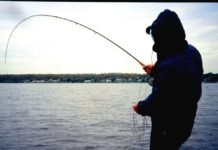Photo courtesy Trouts Fly Fishing
Mayflies are a crucial food source for a wide variety of fisheries and occupy various aquatic niches in all 50 states, from cold rivers to warm still waters. With over 600 species in the US alone, hatching from early spring through late fall, there is always a relevant mayfly species to imitate. But the US is a big place, so we created this ongoing series specifically to explore the great variety of mayfly hatches in different regions, in order to give fly anglers a broader view of mayfly fishing across the country.
This week, our featured region is the Front Range of Colorado. Famous for well-educated trout, the technical challenges of mayfly fishing in the Centennial State can be a bit overwhelming at times, especially on rivers close to Denver. We recently caught up with John Brown from Trouts Fly Fishing in the Mile-High City, who was kind enough to provide some guidance on which mayfly hatches deserve the most attention, and which fly patterns imitate them best. Hopefully this information will be useful not only for anglers in Colorado, but also for anyone who is seeking a more comprehensive understanding of mayfly fishing.
1. What are some of the most important mayfly hatches in your region, and when do they typically start?
Mayflies make up a large part of trout’s diets throughout Colorado. Baetis are particularly widespread, hatching all year-round in various sizes and colors, making them the most popular mayfly species to imitate here. Along with the Baetis, we are also fortunate to have drakes during the warmer months. Primarily starting in late June through July, with a few lingering into August depending on the year, green drakes will hatch in abundance.
2. What are some of your favorite local fly patterns/variants to imitate these mayflies in your region?
It’s important to have a variety of styles, sizes, and colors available, since the fish here can really key into specific traits and stages of the hatch. Even slight changes to your fly might make all the difference, so don’t be hesitant to swap flies if what you’re using isn’t working. Here are some of our favorite mayfly variant patterns. (Click the fly names for more information.)





3. Tell us about a memorable fish or day you’ve had using one of the flies described above.
Last year, I’ve had the benefit of spending many hours on our local rivers and lakes. During June, I was fishing with my father, and in the late afternoon we came across a strong green-drake hatch after a slow day on the water. After landing several beautiful trout, I was able to get a rainbow that would be the fish of the day on a size 14 Antonio’s March Brown within seconds of it hitting the water. Made for a great end to a great day.
Credit: Source link






























